Yet again, we were faced with another heartbreaking reminder of the devastating, indiscriminate nature of snares. Fortunately, this story has a happy ending.
It all began on the morning of 5th April 2022, when we received reports from the Shimba Hills of a baby elephant who had been caught in a snare. She was still in her mother’s care, but the situation was precarious: The snare was trailing nearly a metre behind her and slicing deep into her tiny leg. It was only a matter of time before infection set in and she was rendered immobile, which would be a death sentence.
With a precious life on the line, our SWT/KWS Tsavo Mobile Vet Unit and Airwing leapt into action. We headed to the airstrip, where our helicopter was waiting to bring Dr Poghon to the scene.
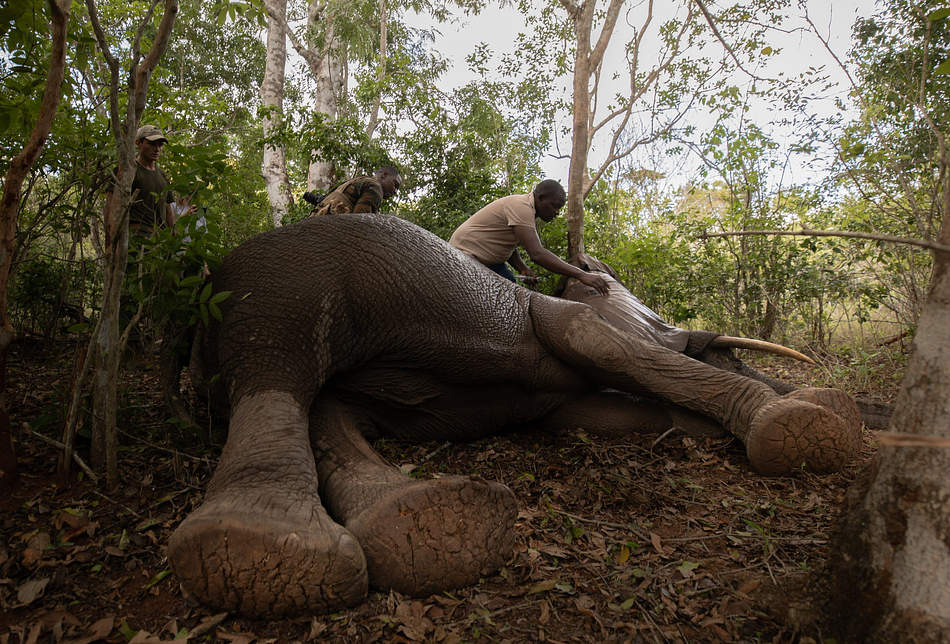
The mother had to be sedated in order for treatment to safely commence
The first order of business was to sedate the calf’s mother. She would be fiercely protective of her baby, so this step was needed in order to commence treatment. Upon spotting the pair from the sky, the pilot gently shepherded them to an open area. Dr Poghon landed the dart, and soon the mum had succumbed to the anaesthetic. The helicopter hovered over her body, which allowed the ground team to locate her. They made sure she was as comfortable as possible, pouring water behind her ears to keep her cool and placing a small twig in her trunk to keep breathing channels open. Knowing she would be anxious to reunite with her baby, they also adjusted her position to help her easily get back to her feet upon being revived.
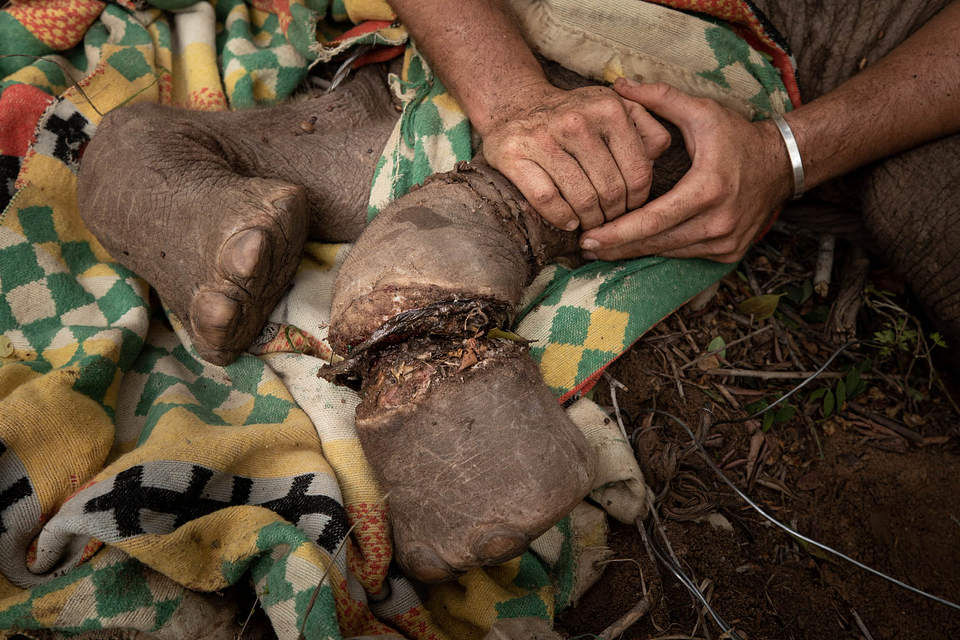
The newborn calf had a horrific snare wound encircling her front left ankle
In the meantime, the helicopter flew off in search of the baby, who had veered away from her mum. This was no small task, as the Shimba Hills is a labyrinth of green. The vegetation could easily swallow a full-grown elephant, let alone an infant calf. The eagle-eyed persistence of the pilot paid off, and they eventually found the tiny patient.
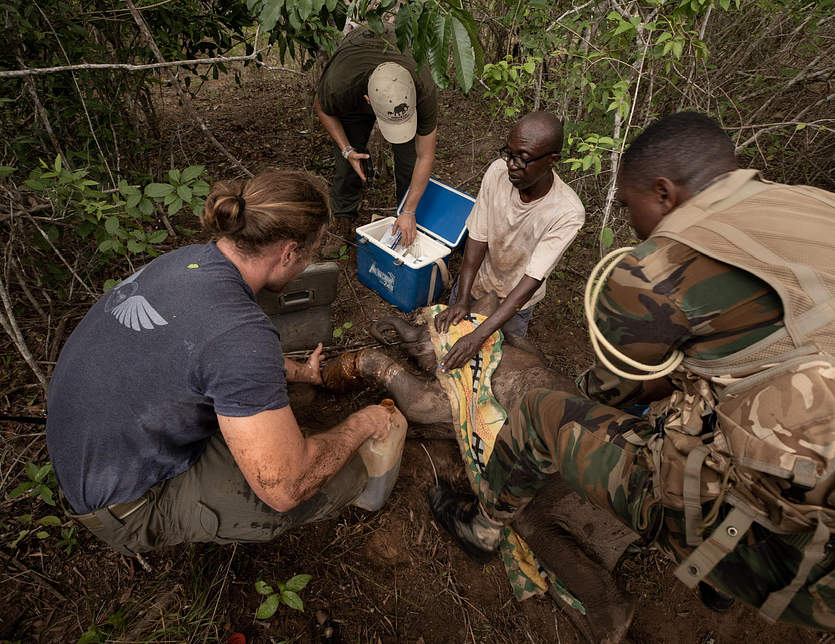
After removing the snare, the team treated the calf's wound to aid healing and stave off infection
While the helicopter hovered overhead, the ground team ran through the impenetrable forest. After securing the baby, they tried to keep her as calm and cool as possible until Dr Poghon arrived and could sedate the calf. This was an all-hands-on-deck treatment, so the pilot landed the helicopter in order to assist. As soon as the calf was sedated, everyone got to work.
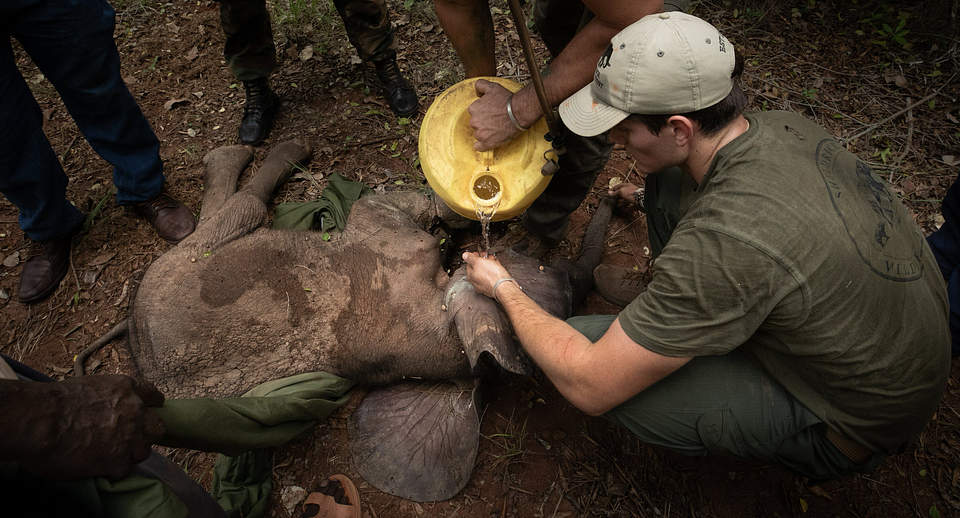
It was important to keep mum and baby cool and comfortable throughout treatment
We were confronted with a grisly scene. It was a snare of the worst kind: a thick wire which formed an unrelenting noose around the calf’s leg. The resulting injury was grave, slicing around her front left ankle. After removing the snare — which was a challenge in and of itself, given the thickness of the wire — the team cleaned the wound, administered antibiotics and anti-inflammatories, and packed it with green clay to aid healing.
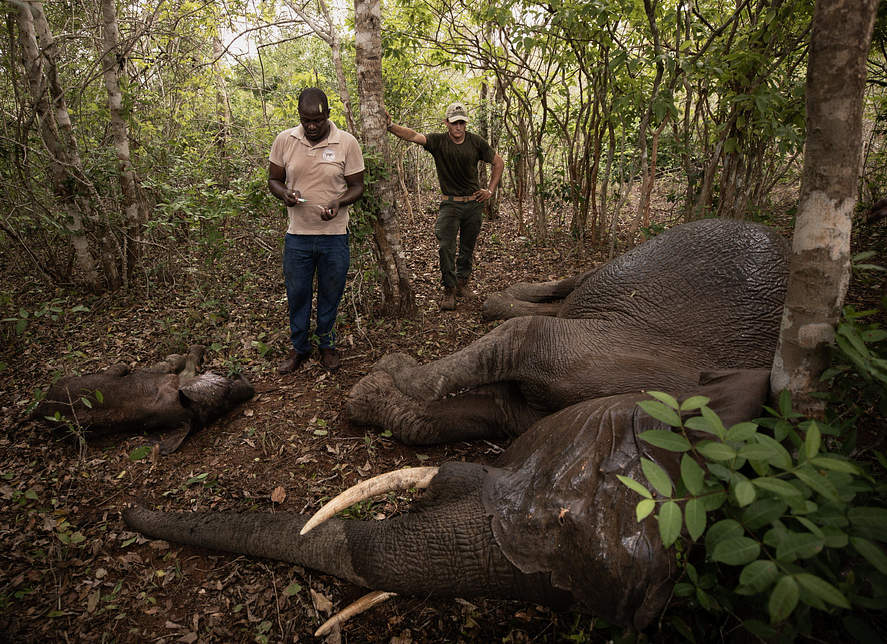
Then, the team carried the baby several hundred metres uphill to reunite her with her mother
With treatment complete, the next challenge awaited. The team now had to deposit the baby at her mother’s side. This was a formidable feat, as they had to carry her more than 400 metres up a steep hill, navigating extremely dense bush. At last, she was back where she belonged — nestled right next to her mum.
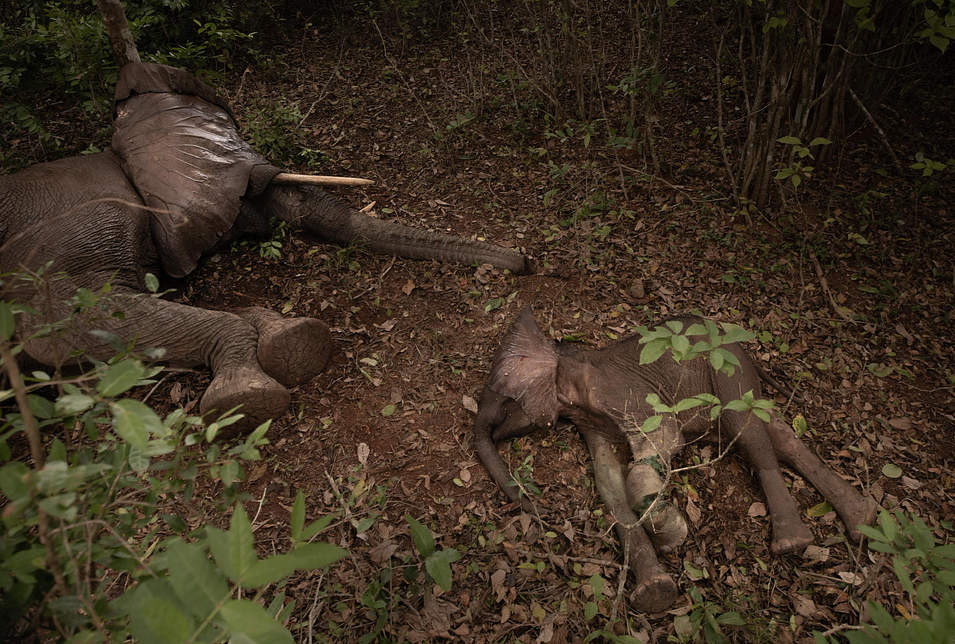
Mum and baby awoke from their sedation right where they belong — by each other's sides
While the rest of the team moved a safe distance away, Dr Poghon revived mother and baby. After caressing each other with their trunks, the pair promptly disappeared into the forest. Ground teams will continue to monitor the patient while she heals. However, despite the gravity of her injury, Dr Poghon is optimistic that she will make a full recovery. Elephants are incredibly resilient creatures — and all well, this little calf has a long and loving life ahead of her. Because she received help in her hour of need, that future is still hers for the taking.
